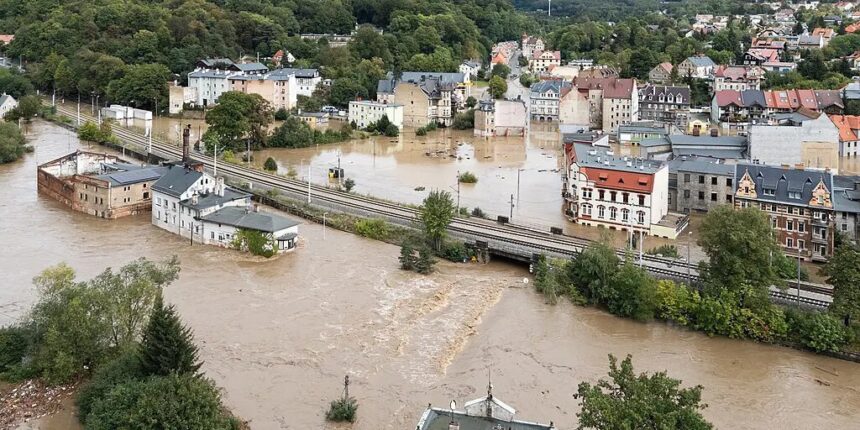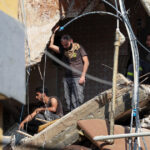From ClimateREALISM
By Linnea Lueken

Time magazine recently published an article titled “Is Climate Change Causing Deadly Floods in Europe?” which, while providing some balance, still confirms that the recent floods in Poland and parts of Europe show a wider worsening pattern caused by climate change. This is false. There is no indication in the data of a “pattern” of increasing flood severity or occurrence.
Time acknowledged that it was “difficult to draw a conclusive link between this event and climate change,” but went on to say that “experts say the worst flooding to hit the region in at least two decades is consistent with a broader pattern of extreme weather.”
future, Time quoting a professor from the University of Bristol who recommended an attribution study to determine whether the floods were caused by climate change:
“It’s difficult to associate a single event with the impact of climate change,” said Paul Bates, a professor of hydrology at the University of Bristol who specializes in flood science. Bates said that in order to prove definitively whether climate change caused the floods in Europe or not, researchers would need to conduct an attribution study, which would take at least several weeks. “Every time we do an attribution study, we tend to find that the events we see have been exacerbated by climate change, and I’m pretty sure that’s going to happen here, but we just don’t know yet,” Bates said. .
A few weeks to study peer review, which will go by very quickly.
As Climate Realism has pointed out many times, attribution studies are more trusted by the media and scientists, and are often used more like propaganda than science. Attribution studies compare unverified, counterfactual models of Earth’s climate and emissions, assuming that any differences between the models are due to human-caused carbon dioxide emissions. No model describes the world, and modelers assume conclusions before they are reached, using the model only to confirm preexisting beliefs. As a result, the models never detect anything other than human influence on weather events, and almost always show that human activity likely contributed to each event studied.
Although it is true that warmer air holds more water, it does not directly translate into more rain. In addition, warming is not happening consistently even within the country’s own borders, with some places (such as cities) showing warmer weather than rural areas, which in some places can see a cooling trend. Global average warming is not causing it regional tornado.
Intergovernmental Panel on Climate Change 6Th The Assessment Report shows that there are no signs of an increase in heavy rains and pluvial floods (lightning or rain). And only in the most extreme and unrealistic scenario does the IPCC speculate with confidence that climate change could cause floods after 2050. (See image below)
Figure 1 – Table 12.12 | on Page 90 – Chapter 12 of the UN IPCC Sixth Assessment Report. The emergence of Climate Impact Drivers (CIDs)
The European floods discussed in the article are unprecedented. The Danube River, which brought many floods in Europe this year, experienced a worse flood in 1997. The same flood destroyed Budapest in 1838, Vienna has always been at war with the Danube, and there are many other historical records of great floods throughout. history in the area.
Cities that invest in flood management fare better in the final event than those that do not – this will be the case if climate change is a factor in flood trends. totally, Time‘s post is not that bad, it is careful not to make statements that are too specific when explaining the climate connection. However, it is wrong to suggest that there are more severe weather patterns like floods caused by climate change when the available data do not show a changing trend.
Related




